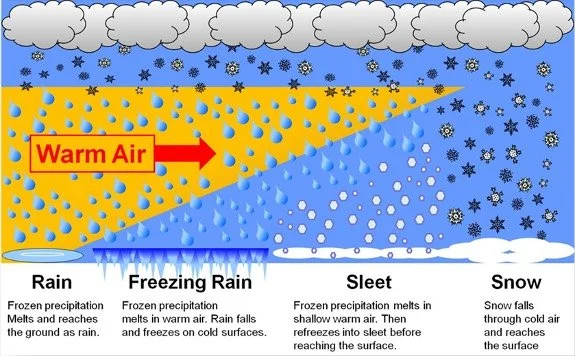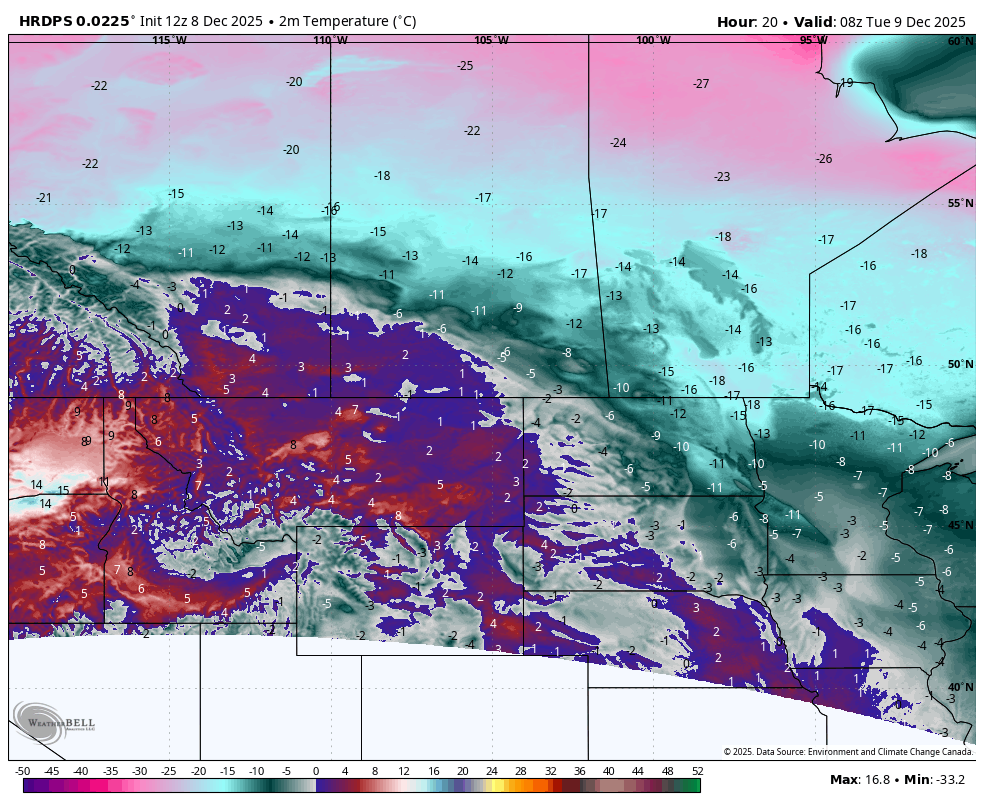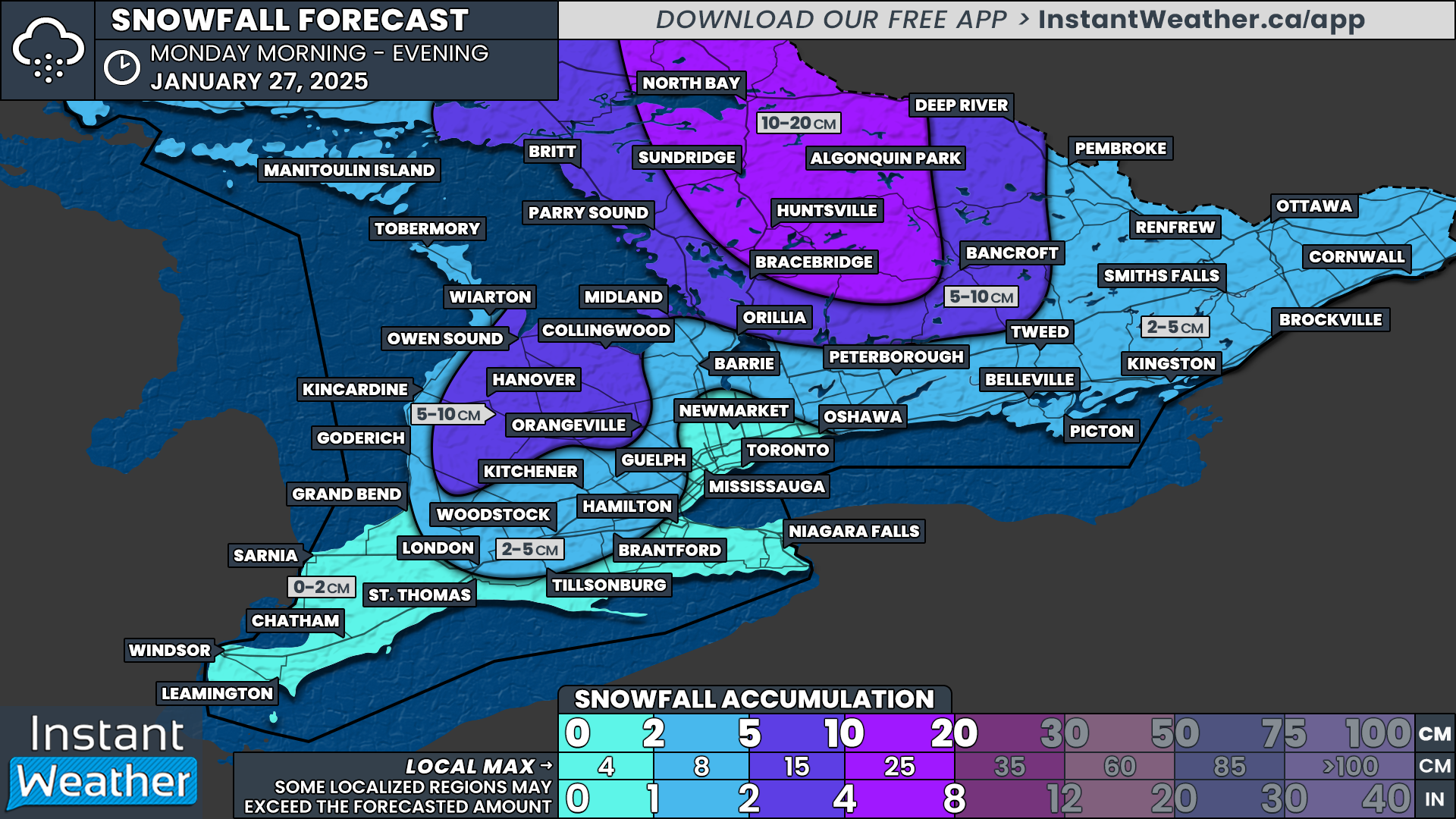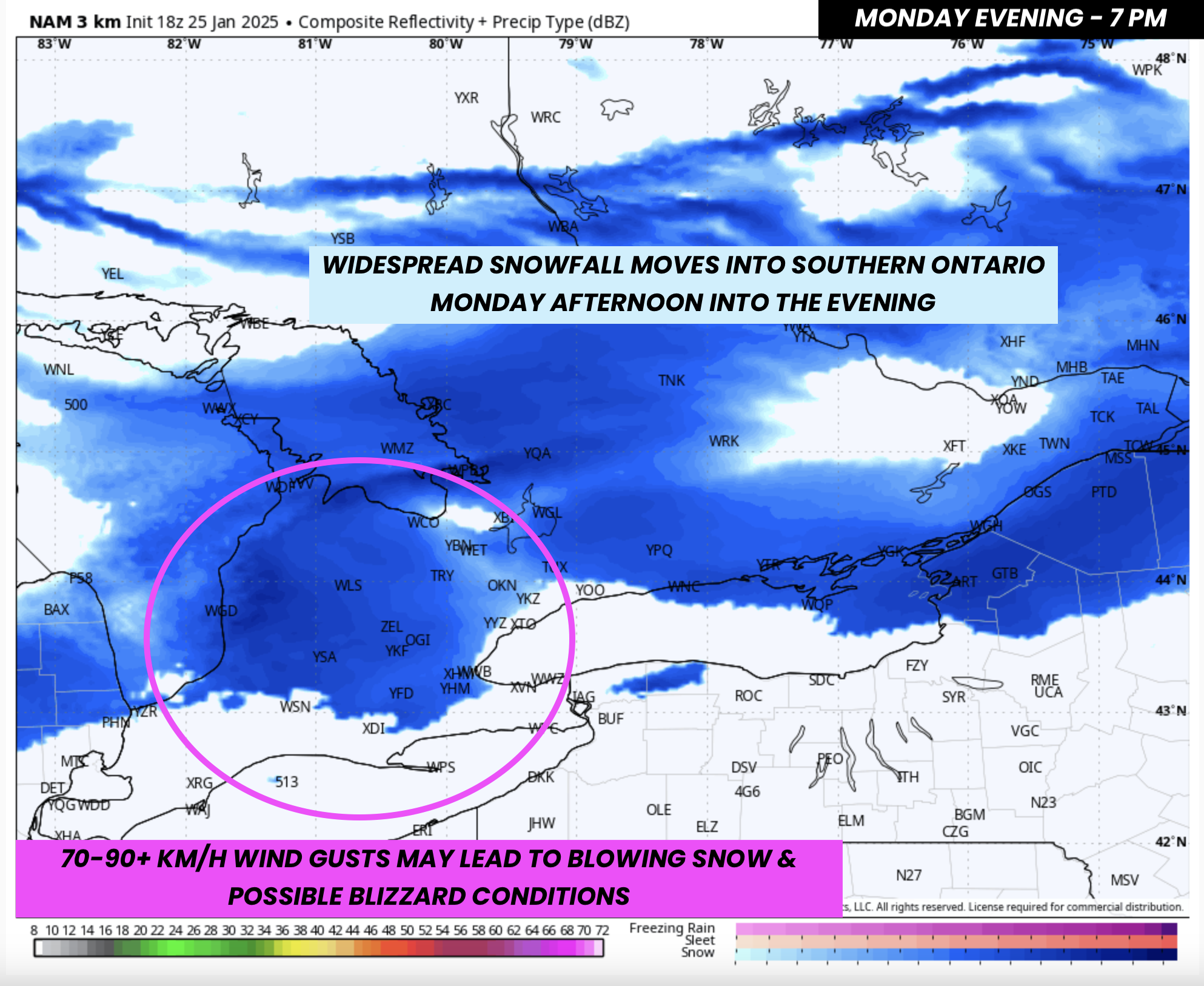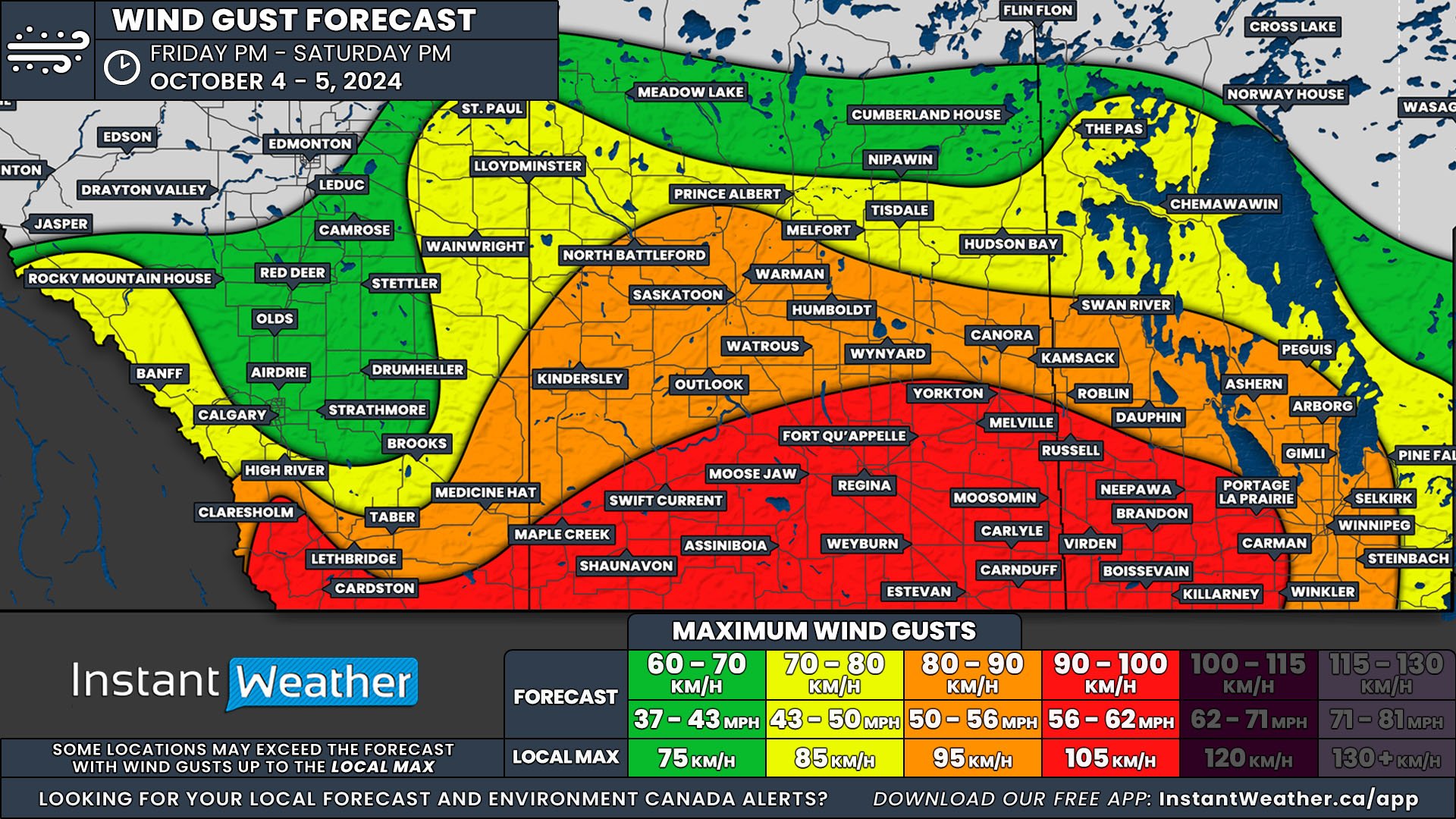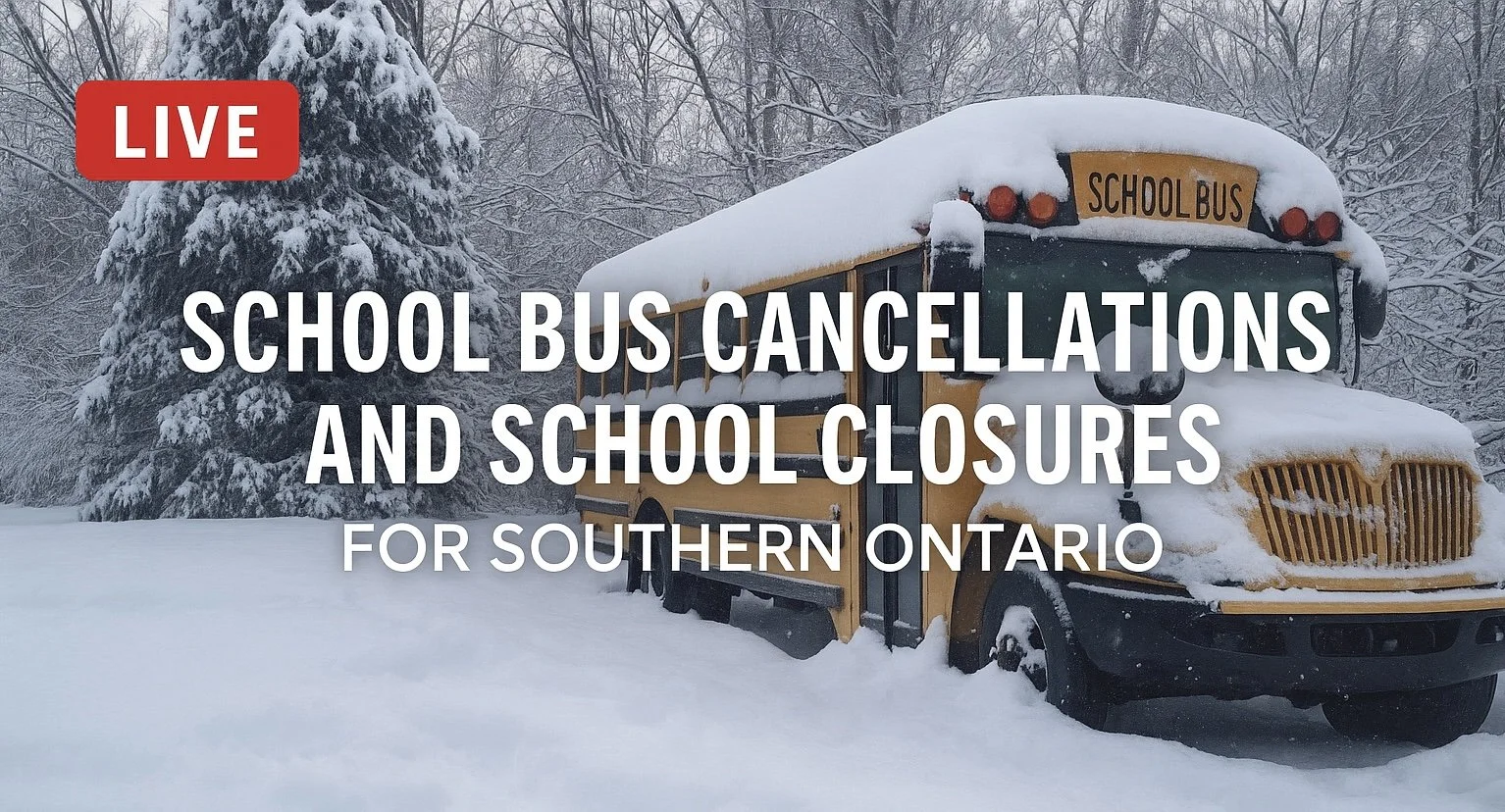Nasty Winter Storm Will Bring Mixed Bag of Precipitation, Flash Freeze Risk, and Strong Winds to Alberta Monday & Tuesday
/The forecast across Alberta for Monday and Tuesday is certainly complex. We are looking at all precipitation types; rain, snow, freezing rain and ice pellets; to be falling somewhere in the province and some places could see a combination of different kinds of precipitation. There is also a widespread risk of a flash freeze and to top it all off, wind gusts exceeding 100km/h are likely.
Before we get too ahead of ourselves, let’s start with the least complicated aspect of the forecast: the snow in Northern Alberta and through the Rockies.
Northern Alberta & The Rockies
Light snow has been falling in parts of Northern Alberta Monday morning and into the afternoon, trailing the previous round of widespread snowfall across the region. A narrow band of snow will persist through the afternoon and drop 5+cm of accumulating snow by the evening.
The Hrdps model showing precipitation type and intensity at 5Pm MT on Monday, courtesy of WeatherBell.
In the evening, widespread snow will move into Northern Alberta, including the Northern Rockies, from British Columbia. The snow will spread southeastward across Northern Alberta and into parts of Central Alberta during the evening and overnight hours.
The snowfall will last for up to 8 hours and it will start to taper off along the BC border shortly after midnight. This large band of snow will exit into Saskatchewan before sunrise, but scattered areas of light snow will linger through the morning across Northern Alberta.
The area that is expected to see snow throughout Monday afternoon will end up with the greatest accumulation by Tuesday afternoon. More than 15cm of fresh snow is anticipated over this area, especially in Peace River, on top of what has already fallen from the weekend. Beyond this, the rest of Northern Alberta and into parts of Central Alberta will be in the 5-15cm range and accumulations decrease moving southward. There is a slight caveat to this, which we will touch upon a bit further down.
For the Rockies, the snowfall will spread southward during the evening and overnight. Overall, 5-15cm can be expected throughout this region. The higher elevations will approach 15cm while the valleys will be closer, or possibly even below, 5cm.
Central Alberta
Things start to get messy in parts of Central Alberta as the band of snow travels southeastward into the region.
The arrival of a warm front that crossed through Central and Southern Alberta overnight Sunday has resulted in temperatures climbing to a few degrees above the freezing mark across the region. As the snow from Northern Alberta tracks southeast through the evening and overnight Monday, and encounters this warmer air above the surface, there will be a transition over to ice pellets (sleet) and freezing rain.
This is expected to start to occur to the north of Edmonton, from Whitecourt to St. Paul. Despite the surface temperatures remaining subzero in this area, there will be enough warm air aloft for the transition to ice pellets to happen and this area could see a few centimetres of ice pellets accumulating. The caveat mentioned above is that the map of snowfall totals also includes accumulation of ice pellets in this area.
precipitation types and their corresponding temperature profiles
Moving southward, the amount of warm air aloft increases and the precipitation will change to freezing rain. The area at risk of freezing rain stretches roughly from west of Drayton Valley and Rocky Mountain House to Wainwright and Provost. The northern part of this area will likely see a combination of ice pellets and freezing rain as the thickness of the warm air aloft decreases.
The freezing rain is expected to be light and only last for an hour or two, resulting in up to 1mm of ice accretion. However, this is still enough to cause some issues when travelling on untreated roads.
Timing-wise, the ice pellets and freezing rain will start to fall as early as 7pm Monday evening and continue into the overnight hours as the band of precipitation tracks towards Saskatchewan.
The rdps model showing precipitation type and intensity at 3am MT on Tuesday, courtesy of WeatherBell.
Southern Alberta
In Southern Alberta, as well as in portions of Central Alberta, surface temperatures hovering around zero, and slightly above, will lead to precipitation falling as rain with a bit of wet snow mixed in. The rain will be light and scattered, broken off from the main band of precipitation, throughout the region overnight and into Tuesday morning. Unfortunately, this poses a unique problem for this region.
In the early morning hours of Tuesday, a sharp cold front will start to blast southward through Central and Southern Alberta. Temperatures could plunge by up to 20°C in the span of only a few hours, resulting in a flash freeze of any rain that has fallen, as well as the snow melt from the previous day.
This flash freeze is expected to happen just in time for the morning commute for Calgary and communities to the north, so road conditions could be very poor if they aren’t treated ahead of time and maintained. The cold front will then stall around Calgary through the morning and afternoon before it continues tracking southward during the evening, bringing below freezing temperatures to the rest of Southern Alberta.
If that wasn’t enough, strong winds gusts up to, and possibly exceeding, 100km/h are possible in Southwestern Alberta overnight Monday. Luckily, these strong winds should die down by Tuesday morning.
The hrdps model showing surface temperature at 1am MT on Tuesday, courtesy of WeatherBell.
The hrdps model showing surface temperature at 0am MT on Tuesday, courtesy of WeatherBell.
All in all, this incoming system will impact most of Alberta, with each region expecting to be impacted in different ways. Road conditions will deteriorate across the province at some point over the next 24 hours so make sure to plan accordingly when travelling and stay safe.





